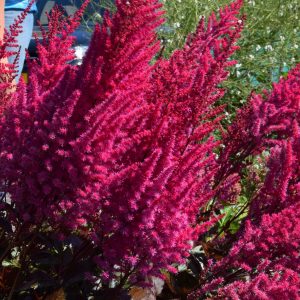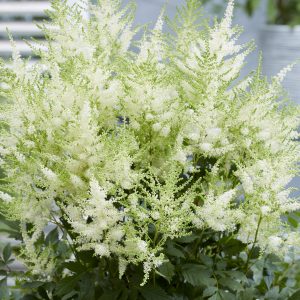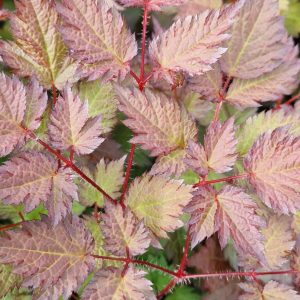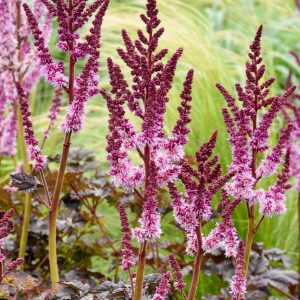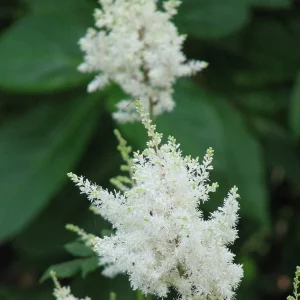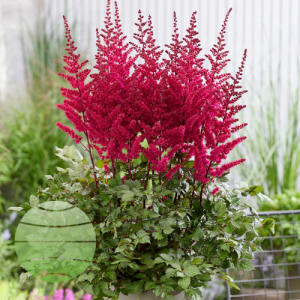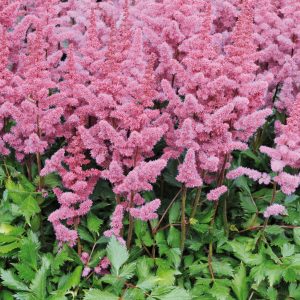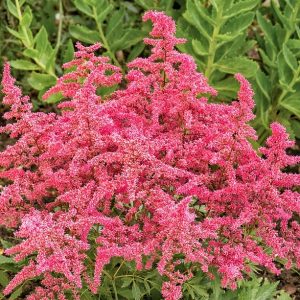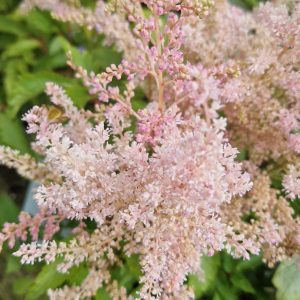Astilbe, known for its feathery plumes and attractive foliage, is a stunning perennial that adds elegance to shady or woodland gardens. Follow this comprehensive planting guide to ensure successful establishment and lush blooms in your garden.
Selecting the Planting Site
Light Requirements: Astilbe thrives in partial to full shade. Choose a location with dappled sunlight or filtered shade for optimal growth.
Soil Conditions: Plant in rich, well-draining soil that retains moisture. Astilbe prefers slightly acidic to neutral soil.
Planting Time
Optimal Timing: Plant Astilbe in early spring or Autumn. These seasons provide mild temperatures and allow the plants to establish before extreme weather.
Planting Process
Prepare the Soil: Work the soil to a depth of 12 inches, incorporating organic matter such as compost or well-rotted manure.
Plant Depth: Plant Astilbe at the same depth it was in the nursery container. Space multiple plants about 18 to 24 inches apart, depending on the variety.
Watering
Consistent Moisture: Keep the soil consistently moist, especially during dry periods. Astilbe is not drought-tolerant and benefits from regular watering.
Mulching: Apply a 2-3 inch layer of organic mulch around the plants to retain soil moisture, suppress weeds, and maintain a cool root environment.
Fertilisation
Rich Soil: Astilbe appreciates nutrient-rich soil. Before planting, incorporate a balanced, slow-release fertiliser into the soil.
Annual Feeding: In early spring, apply a balanced fertiliser according to package instructions to support healthy growth.
Support
Staking Tall Varieties: Provide support for taller Astilbe varieties to prevent flopping, especially when the plumes are in full bloom.
Pruning
Deadheading: Remove spent flowers to encourage continuous blooming and maintain a neat appearance.
Autumn Clean up: Trim back faded foliage in late Autumn to tidy up the plants and prepare them for winter.
Pest and Disease Management
Slug Control: Astilbe is susceptible to slugs. Use slug baits or other methods to control slug populations.
Good Air Circulation: Proper spacing between plants promotes good air circulation, reducing the risk of fungal diseases.
Winter Care
Mulching in Winter: Apply a layer of mulch in late Autumn to protect the plants from winter cold and fluctuating temperatures.
Avoid Waterlogged Soil: Ensure the soil drains well to prevent waterlogging during winter, which can lead to root rot.
Division
Periodic Division: Every 3-4 years, divide mature Astilbe clumps to rejuvenate the plants. This is best done in early spring or Autumn.
Adaptation
Adjust to Local Conditions: Astilbe varieties may have specific requirements. Be attentive to the particular needs of the cultivars you have planted and adjust care accordingly.
By following these guidelines, you’ll establish a healthy and vibrant Astilbe. Adapt care based on your specific growing conditions and enjoy the lush and colourful blooms that Astilbe brings to your shaded landscape.




